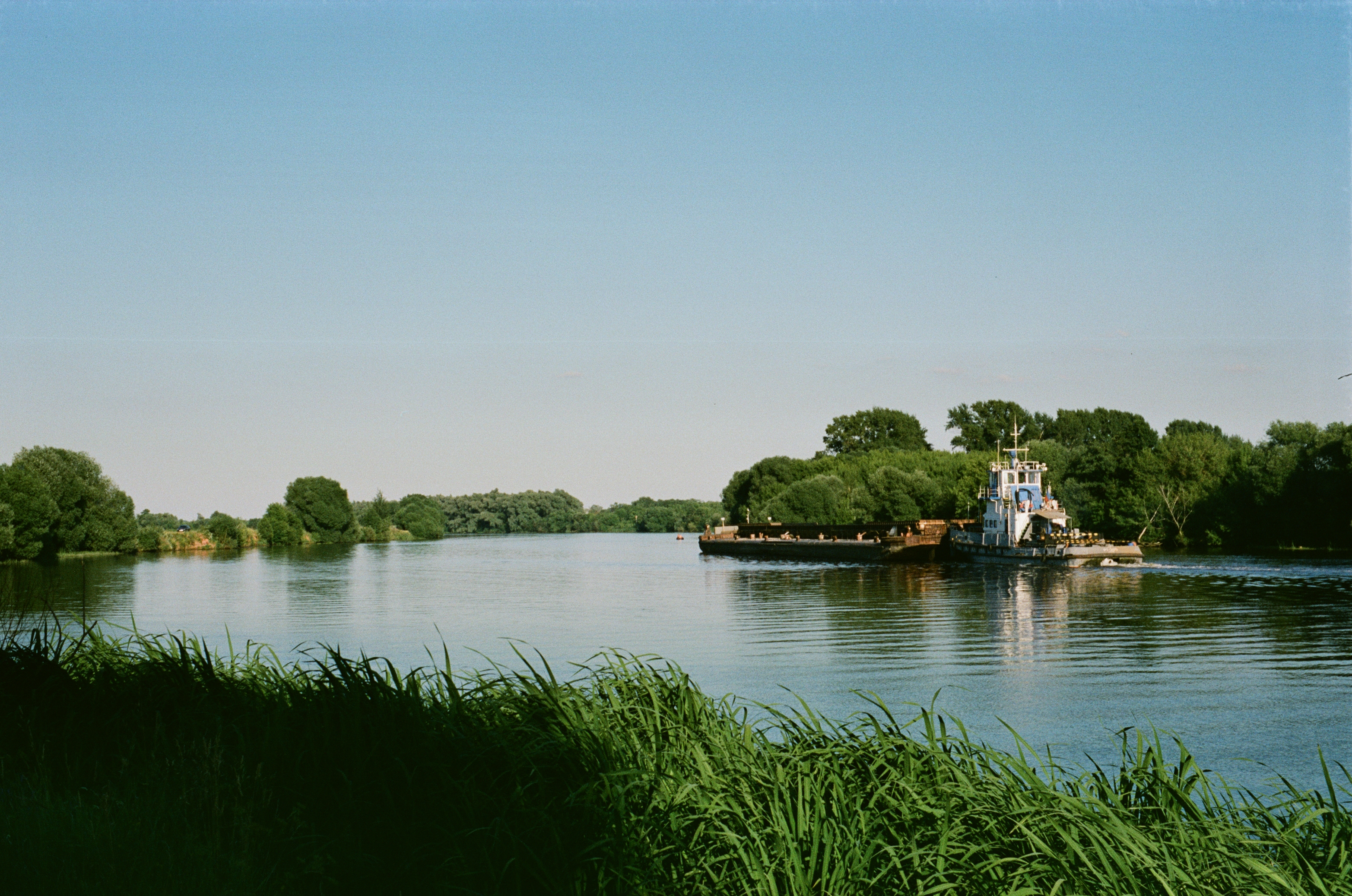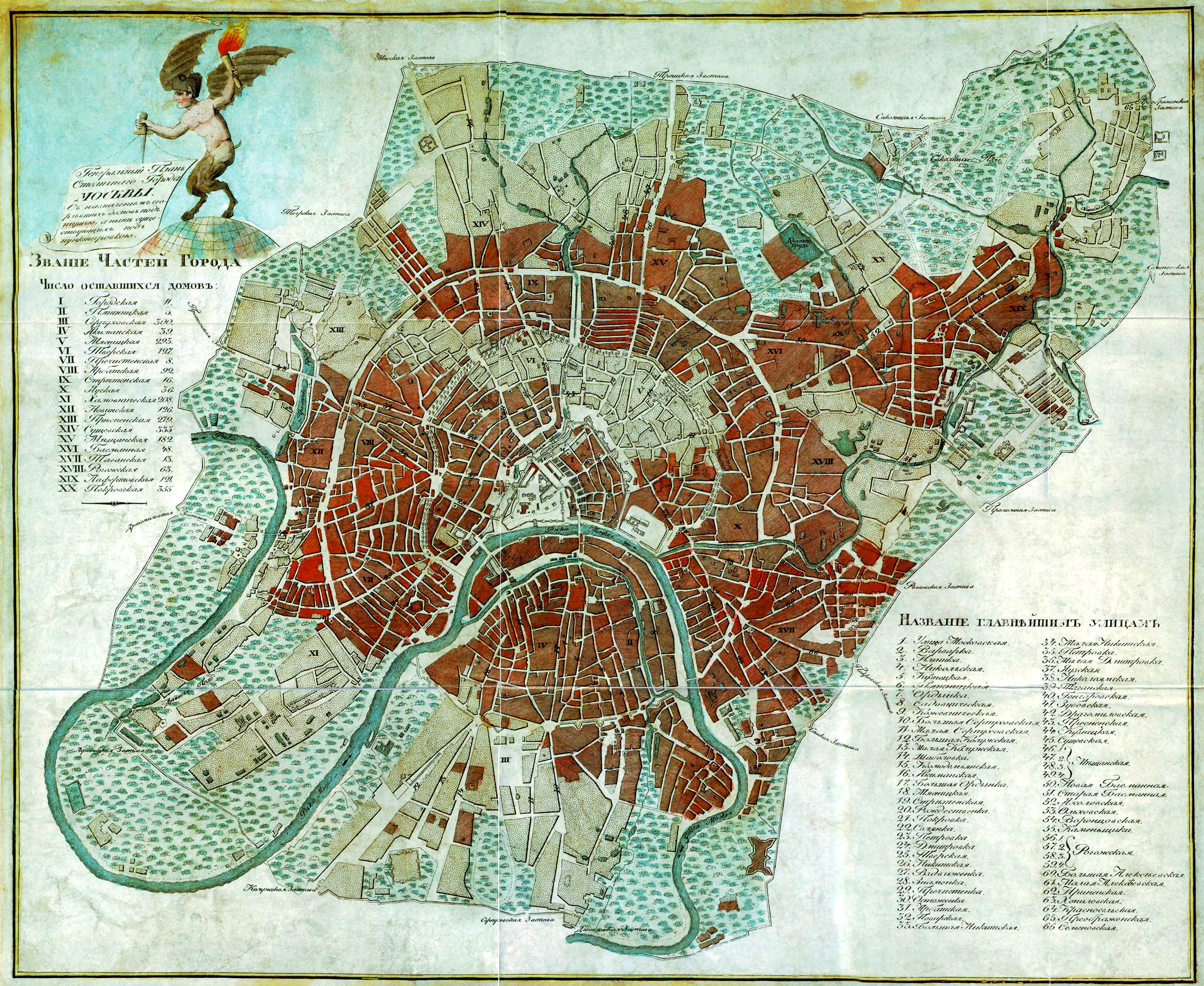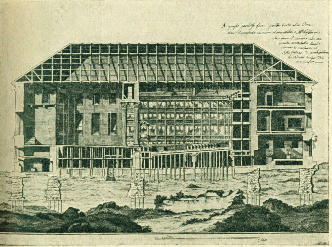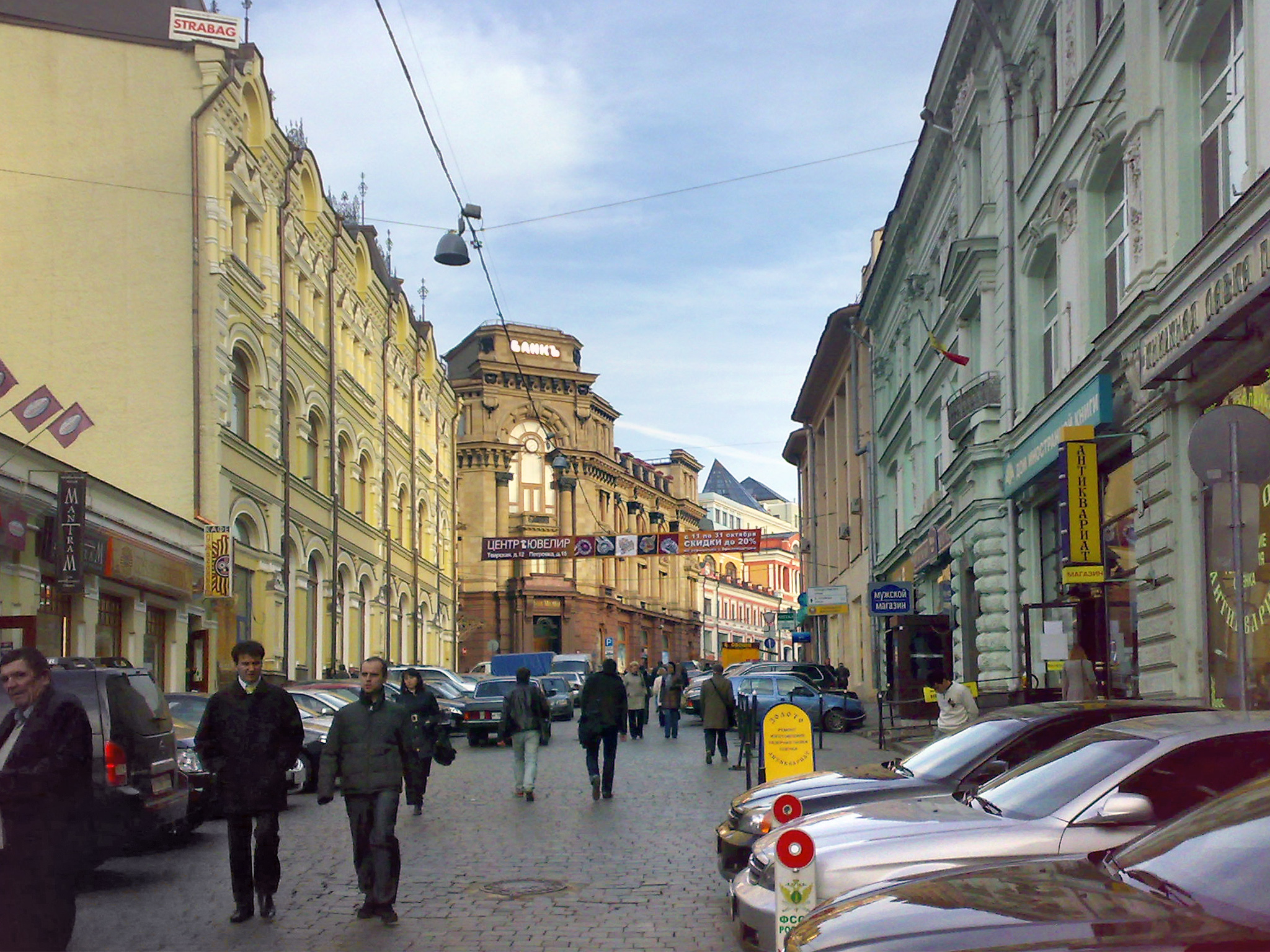|
Neglinka
The Neglinnaya ( rus, Неглинная, p=nʲɪˈɡlʲinːəjə), also known as Neglinka, Neglinna, Neglimna (Неглинка, Неглинна, Неглимна), is a 7.5 km underground river in the central part of Moscow and a tributary of the river Moskva. It flows in the tunnels under Samotechnaya Street, Tsvetnoy Boulevard, Neglinnaya Street and Alexander Garden and Zaryadye. The Neglinnaya discharges into the Moskva through two separate tunnels near Bolshoy Kamenny Bridge and Bolshoy Moskvoretsky Bridge. History The river in its natural state used to flow openly from the northern parts of Moscow to the south across the very centre of the city. The Kremlin was built on a hill east of the Neglinnaya, using the river as a moat. The moat did not stop foreign invasions but slowed development of territories west of the Kremlin; initially, the city grew eastward, into Red Square and Kitay-gorod. When Muscovites began settling on the western side, territories around the Neg ... [...More Info...] [...Related Items...] OR: [Wikipedia] [Google] [Baidu] |
Moskva (river)
The Moskva (, ''Moskva-reka'') is a river that flows through European Russia, western Russia. It River source, rises about west of Moscow and flows roughly east through the Smolensk Oblast, Smolensk and Moscow Oblasts, passing through central Moscow. About southeast of Moscow, at the city of Kolomna, it flows into the Oka (river), Oka, itself a tributary of the Volga, which ultimately flows into the Caspian Sea. History According to recent studies, the current riverbed of the Moskva River was occupied about 12 thousand years ago. In addition to Finnic tribes, the Moskva River is also the origin of Slavic tribes such as the Vyatichi tribe. Etymology The name of the city is thought to be derived from the name of the river. Several theories of the origin of the name have been proposed. The most linguistically well-grounded and widely accepted is from the Proto-Balto-Slavic root *''mŭzg''-/''muzg''- from the Proto-Indo-European "wet", so the name ''Moskva'' might signify a r ... [...More Info...] [...Related Items...] OR: [Wikipedia] [Google] [Baidu] |
Workshop
Beginning with the Industrial Revolution era, a workshop may be a room, rooms or building which provides both the area and tools (or machinery) that may be required for the manufacture or repair of manufactured goods. Workshops were the only places of production until the advent of industrialization and the development of larger factories. In the 20th and 21st century, many Western homes contained a workshop in either the garage, basement, or an external shed. Home workshops typically contain a workbench, hand tools, power tools, and other hardware. Along with the practical application of repairing goods, workshops are often used to tinker and make prototypes. Some workshops focus exclusively on automotive repair or restoration although there are a variety of workshops in existence today. Woodworking, metalworking, electronics, and other types of electronic prototyping workshops are among the most common. Backshop In some repair industries, such as locomotives and aircra ... [...More Info...] [...Related Items...] OR: [Wikipedia] [Google] [Baidu] |
Neglinnaya Tunnel , headquartered on Neglinnaya Street
{{disambig ...
Neglinnaya, in Moscow, Russia, refers to: * Neglinnaya River, currently locked into a tunnel * Neglinnaya Street, built in 1820s over this tunnel; the boundary between Tverskoy District and Meshchansky District * toponym for Central Bank of Russia The Central Bank of the Russian Federation (), commonly known as the Bank of Russia (), also called the Central Bank of Russia (CBR), is the central bank of the Russia, Russian Federation. The bank was established on 13 July 1990. It traces its ... [...More Info...] [...Related Items...] OR: [Wikipedia] [Google] [Baidu] |
Fire Of Moscow (1812)
During the French occupation of Moscow, a fire persisted from 14 to 18 September 1812 and all but destroyed the city. The Russian Empire, Russian troops and most of the remaining civilians had abandoned the city on 14 September 1812 just ahead of French Emperor Napoleon's troops entering the city after the Battle of Borodino. The Moscow military governor, Count Fyodor Rostopchin, has often been considered responsible for organising the destruction of the former capital to weaken the French army in the scorched city even more. Background After continuing Michael Andreas Barclay de Tolly, Barclay's "delaying operation" as part of his attrition warfare against Napoleon, Kutuzov used Rostopchin to burn most of Moscow's resources as part of a scorched earth strategy, guerilla warfare by the Cossacks against French supplies and total war by the peasants against French foraging. This kind of war without major battles weakened the French army at its most vulnerable point: military ... [...More Info...] [...Related Items...] OR: [Wikipedia] [Google] [Baidu] |
Sazhen
Historical Russian units of measurement were standardized and used in the Russian Empire and after the Russian Revolution, but were abandoned after 21 July 1925, when the Soviet Union adopted the metric system. The Tatar system is very similar to the Russian one, but some names are different. The Polish system is also very close to the Russian. The system existed since Kievan Rus', but under Peter the Great, the Russian units were redefined relative to the English system.Шостьин Н. А. Очерки истории русской метрологии XI – начала XX века. М.: 1975. Until Peter the Great the system also used Cyrillic numerals, and only in the 18th century did Peter the Great replace it with the Hindu–Arabic numeral system. Length The basic unit was the Russian ell, called the ''arshin'', which came into use in the 16th century. It was standardized by Peter the Great in the 18th century to measure exactly twenty-eight English inches (). Thus ... [...More Info...] [...Related Items...] OR: [Wikipedia] [Google] [Baidu] |
Canal
Canals or artificial waterways are waterways or engineered channels built for drainage management (e.g. flood control and irrigation) or for conveyancing water transport vehicles (e.g. water taxi). They carry free, calm surface flow under atmospheric pressure, and can be thought of as artificial rivers. In most cases, a canal has a series of dams and locks that create reservoirs of low speed current flow. These reservoirs are referred to as ''slack water levels'', often just called ''levels''. A canal can be called a navigation canal when it parallels a natural river and shares part of the latter's discharges and drainage basin, and leverages its resources by building dams and locks to increase and lengthen its stretches of slack water levels while staying in its valley. A canal can cut across a drainage divide atop a ridge, generally requiring an external water source above the highest elevation. The best-known example of such a canal is the Panama Can ... [...More Info...] [...Related Items...] OR: [Wikipedia] [Google] [Baidu] |
Masonry
Masonry is the craft of building a structure with brick, stone, or similar material, including mortar plastering which are often laid in, bound, and pasted together by mortar (masonry), mortar. The term ''masonry'' can also refer to the building units (stone, brick, etc.) themselves. The common materials of masonry construction are bricks and building stone, rock (geology), rocks such as marble, granite, and limestone, cast stone, concrete masonry unit, concrete blocks, glass brick, glass blocks, and adobe. Masonry is generally a highly durable form of construction. However, the materials used, the quality of the mortar and workmanship, and the pattern in which the units are assembled can substantially affect the durability of the overall masonry construction. A person who constructs masonry is called a mason or bricklayer. These are both classified as construction worker, construction trades. History Masonry is one of the oldest building crafts in the world. The constructio ... [...More Info...] [...Related Items...] OR: [Wikipedia] [Google] [Baidu] |
Maly Theatre (Moscow)
Maly Theatre (, literally ''Small Theatre'' as opposed to nearby Bolshoi Theatre, Bolshoi, or ''Grand'', opera theatre) is a theatre in Moscow. Russia, principally associated with the production of plays. Established in 1806Londre, Margot p. 307 and operating on its present site on the Theatre Square (Moscow), Theatre Square since 1824, the theatre traces its history to the Moscow University drama company, established in 1756. In the 19th century, Maly was "universally recognized in Russia as the leading dramatic theatre of the century", and was the home stage for Mikhail Shchepkin and Maria Yermolova. 40 of Alexander Ostrovsky's 54 plays premiered at Maly, and the theatre was known as The House of Ostrovsky.Londre, Margot p. 306 The Maly Theatre in Moscow and Alexandrinsky Theatre in Saint Petersburg "to a great extent determined the development of Russian theatre during the 19th and 20th century". Maly Theatre positions itself as a traditional drama theatre that produces class ... [...More Info...] [...Related Items...] OR: [Wikipedia] [Google] [Baidu] |
Petrovsky Bridge
Petrovsky (feminine: Petrovskaya) is a Russian-language surname. Notable people with the surname include: People *Adolf Petrovsky (1887–1937), Soviet diplomat * (born 1981), Russian singer *Boris Petrovsky (1908–2004), Soviet surgeon and politician *Ernst-Ludwig Petrowsky (1933–2023), German jazz saxophonist * David Petrovsky (Lipetz) (also known as Max Goldfarb, Bennett, Humboldt, Brown (1886–1937), Jewish revolutionary politician, economist, journalist, general of the Red Army, and Soviet statesman *Grigory Petrovsky (1878–1958), Ukrainian revolutionary *Ivan Petrovsky (1901–1973), Soviet mathematician *Kristina Petrovskaia (born 1980), retired Russian ice hockey player *Kyra Petrovskaya Wayne (1918–2018), Russian-American writer *Leonid Petrovsky (1897–1941), Soviet lieutenant general * (1933–2019), Russian astronomer, the namesake of 5319 Petrovskaya, minor planet * (1875–1921), Russian philologer, best known for his "Словарь русских личн� ... [...More Info...] [...Related Items...] OR: [Wikipedia] [Google] [Baidu] |
Trinity Bridge (Moscow)
Trinity Bridge may refer to: * Trinity Bridge, Greater Manchester * Trinity Bridge, Crowland *Trinity Bridge, Saint Petersburg Trinity Bridge (, ''Troitskiy Most'') is a bascule bridge across the Neva in Saint Petersburg, Russia. It connects Kamennoostrovsky Prospect with Suvorov Square. It was the third permanent bridge across the Neva, built between 1897 and 1903 by ... * Trinity College Bridge, Cambridge {{Disambig ... [...More Info...] [...Related Items...] OR: [Wikipedia] [Google] [Baidu] |
Kuznetsky Bridge
Kuznetsky Most ( rus, Кузне́цкий Мост, p=kʊˈzʲnʲet͡skʲɪj ˈmost) is a street in central Moscow, that runs from Bolshaya Dmitrovka Street to Lubyanka Street. The name, literally ''Blacksmith's Bridge'', refers to the 18th-century bridge over the (now underground) Neglinnaya River, and a nearby foundry and the settlement of its workers. The street is administered by Tverskoy District (west) and Meshchansky District (east). History Early history Until the end of 15th century, Moscow was growing eastward, into Kitai-gorod. Prince Ivan III of Russia established his arsenal (Пушечный двор, Cannon Court) in the west, beyond the Neglinnaya river. Later, he also set up a settlement of former Pskov residents, abducted from their hometown after the wars of the 1480s. Population grew slowly until the 1737 fire which razed the area. The Bridge Soon after the fire, the territory was built out. Large territories north from the street were consolidated by ... [...More Info...] [...Related Items...] OR: [Wikipedia] [Google] [Baidu] |
Voskresensky Bridge
Voskresensky (; masculine), Voskresenskaya (; feminine), or Voskresenskoye (; neuter) may refer to: People *Alexander Voskresensky (1809–1880), Russian chemist *Vasily Voskresensky (1880–1951), Russian ballet impresario, better known as Wassily de Basil * Petr Voskresensky-Stekanov, Russian and German human rights and LGBTQ activist * Leonid A. Voskresenskiy (1913–1965), Soviet rocket engineer and launch director for Sputnik *Mikhail Voskresensky (1935– ), Russian Pianist * Yury Voskresensky (1977– ), Belarusian politician and businessman Places * Voskresensky District, several districts in Russia * Voskresensky (inhabited locality) (''Voskresenskaya'', ''Voskresenskoye''), several inhabited localities in Russia * Voskresenskoye Settlement, a municipal formation in Novomoskovsky Administrative Okrug of the federal city of Moscow, Russia Other * Voskresensky Gate, the only existing gate in Kitai-gorod, Moscow, Russia * Voskresenskiy, lunar impact crater named after Le ... [...More Info...] [...Related Items...] OR: [Wikipedia] [Google] [Baidu] |




